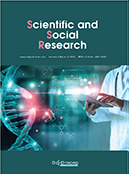Abstract
Deep synthesis works are creative works produced by applying deep synthesis technology. Depending on whether a performer’s image is entirely generated by deep synthesis technology, deep synthesis works can be classified as native synthesized works or regenerated synthesized works. The major legal issues of the deep synthesis works include the classification of the works, copyrightability, rights competition, and potential rights conflicts. This article argues that the originality of deep synthesis works is determined by objective standards. In the event of concurrence of rights, the performer should choose the most appropriate way to protect their rights in specific circumstances. Furthermore, conflicts can be resolved by clarifying the boundaries of the rights of the work. Deep synthesis technology and its application shall be regulated to reduce its negative effects, so as to transform “deepfake” to “deep synthesis” and maximize the benefit of this technology.
References
Cao J, n.d., Development Report Of AI-Generated Content: The First Year of Commercialization of Deep Synthesis, Tencent Research Institute, viewed May 11, 2020, https://tisi.org/14419
Yi J, 2017, Are AI-Generated Works Creations? Legal Science. 5: 138–140.
Xiong Q, 2017, Copyright Recognition of Content Generated by Artificial Intelligence. Intellectual Property, 3: 8.
Cong L, 2019, Copyrightability and Copyright Attribution of Content Generated by Artificial Intelligence. China Publishing, (1): 11-14.
Tessy Gomez, 2020, Powerful American stories to shreds by Nancy Pelosi [Video], YouTube, viewed November 16, 2020, https://www.youtube.com/watch?v=b93zMpwc2B0
Li H, 2020, Criminal Sanctions for Misusing Personal Biometric Information: Taking Deepfake Generated by Artificial Intelligence as Example. Political and Legal Forum, 4: 147.
Jiang Y, 2021, Dimensions and Limitations of Criminal Law Regulation on the Risks of Artificial Intelligence “Deepfake” Technology. Nanjing Social Sciences, 9: 103.
Li T, 2020, Construction of the Criminal Law Regulatory System for “Deepfake” Technology. Zhongzhou Journal, 10: 57.
Zhao G, 2021, Technological Logic and Changes in Communication Ecology of Deep Synthesis in the Intelligent Age. News Industry, 6: 69.
Smith J, 2015, How ‘Furious 7’ Brought the Late Paul Walker Back to Life, The Hollywood Reporter, viewed January 15, 2020, https://www.hollywoodreporter.com/movies/movie-news/how-furious-7-brought-late-845763/
Chertoff M, Rasmussen AF, 2019, The Unhackable Election: What it Takes to Defend Democracy. Foreign Affairs, 98(1): 160.
Lessig L, 2018, Code 2.0: The Laws of Cyberspace. Tsinghua University Press, Beijing, 133–136.
Bao Y, Lu T, Du Y, 2020, Overview of Deep Forgery Video Detection Technology. Computer Science, 9: 286–289
Pfefferkorn R, 2020, Deepfakes in the Courtroom. Boston University Public Interest Law Journal, 2: 264.
Wan Z, Chen C, 2021, Legal Risks and Collaborative Regulation of Deep Synthesis Technology. Science, Technology, and Law, 5: 89.
Shi J, Chang Y, Zhu M, 2020, Comparative Study on Governance Models of Artificial “Deepfakes”. Electronic Government, 5: 75–78.
Goldstein P, 2003, Copyright’s Highway: From Gutenberg to the Celestial Jukebox, Stanford University Press, Stanford, 21
Wang Q, 2015, Copyright Law, China Renmin University Press, Beijing, 22.
Wu H, 2017, Institutional Arrangements and Legal Regulations in the Era of Artificial Intelligence. Legal Science, 5: 131–132.
Lei B, 2005, Copyright Law, Law Press, Beijing, 152.
Cui G, 2020, The Dual Division of Visual and Content in Audiovisual Works. Intellectual Property, 5: 28.
Quan N, Han D, 1996, The Competition and Conflict of Basic Rights. Foreign Law Translation and Review, 4: 76.
Shi G, 2020, An Exposition on the Doctrinal Study of the New Regulations on the Right of Portrait in the Civil Code from the Perspective of Judicial Vision. Journal of Gansu Political Science and Law Institute, 5: 108–109.
Zhu G, 2017, Research on the Rights of Audiovisual Performers, Law Press China, Beijing, 21–23.
Ran K, 2015, Property Interests and Remedies in the Right of Portrait. Tsinghua Law Review, 4: 79–80.
Li Y, 2017, Interpretation and Annotation of the General Principles of the Civil Law, Law Press China, Beijing, 633–635.
